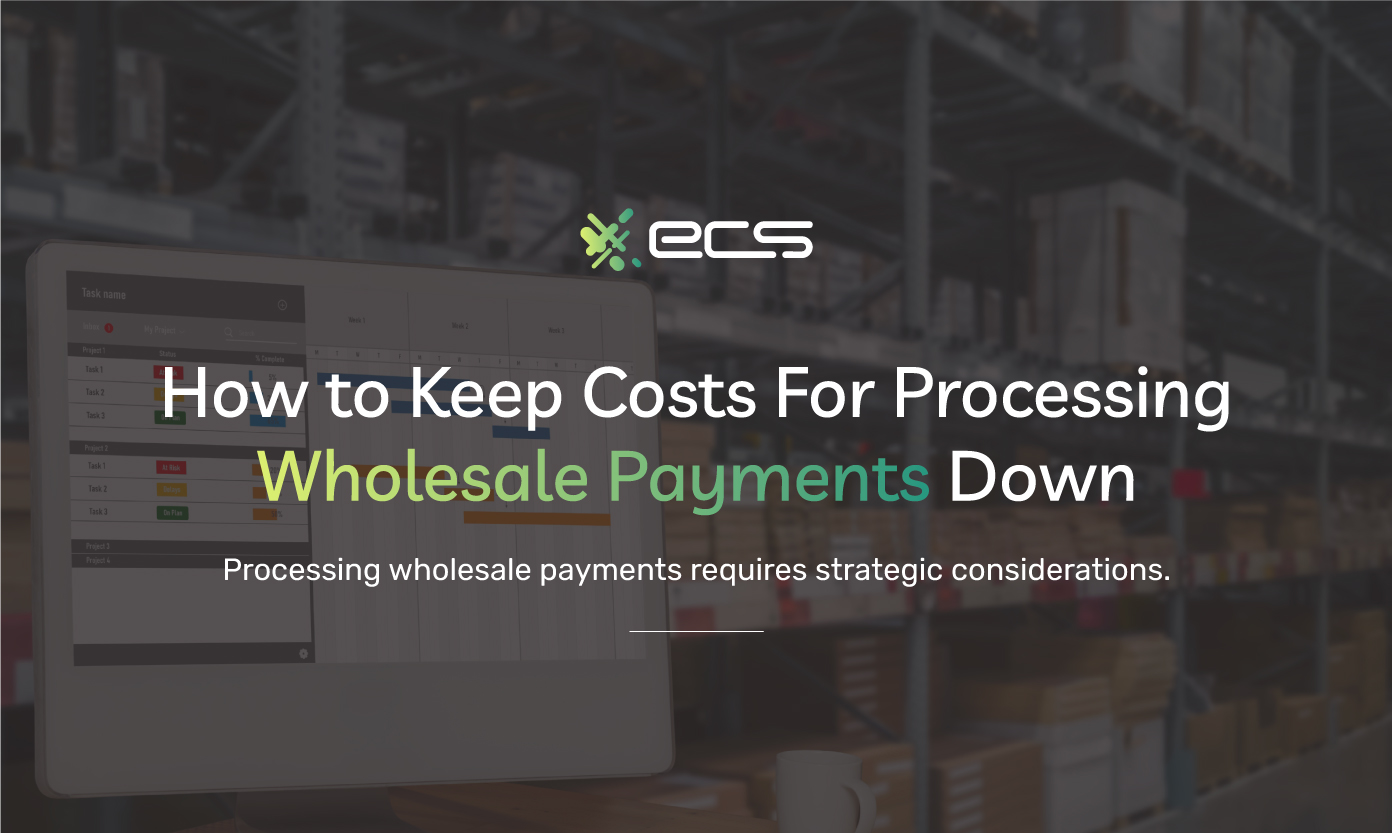Wholesale payment processing is different from the merchant processing systems used by retailers. That’s because wholesale is an entirely different type of business (pun intended). But before we go into all that, let’s look at an industry overview and review the different kinds of wholesalers.
Wholesaling Industry Overview
Consumers are increasingly interested in where their products come from. They want to know where the products are sourced and if they align with their ethos. However, aside from personal concerns, they give little thought to the supply chain.
As wholesalers, manufacturers, and retailers know, wholesalers are middlemen. They are the unsung heroes of bulk selling who connect producers with consumers. Without wholesalers, consumers could not enjoy their products of choice—whether they are personal hygiene products or shrimp scampi in their local Italian eatery.
So, who’s the biggest wholesaler in America? You guessed it: Costco. Costco sells millions of products in hundreds of subcategories from 580 different warehouses. Costo is different from some competitors because it is also consumer-facing. Families in need of gallons of ketchup can shop right alongside restaurant owners.
Beyond that, wholesaling varies widely by industry. In part, this is because wholesalers tend to focus on specific products. If you see a significant number of Sysco and U.S. Foods trucks on the interstate, it’s because these two companies are the largest wholesalers of food in the restaurant business.
Wholesale trade accounts for about 6% of the domestic GDP. The industry employs about 6 million people, or roughly 2% of the population. In 2021, wholesale activity in the United States generated about $1.4 trillion, which was right on par with retail.
Six percent is a significant percentage of the domestic economy. Numbers like this indicate that wholesaling is not going away anytime soon. It’s existed as a business model for thousands of years, ever since Sumerian scribes in warehouses along the Euphrates tallied inventory on clay tablets.
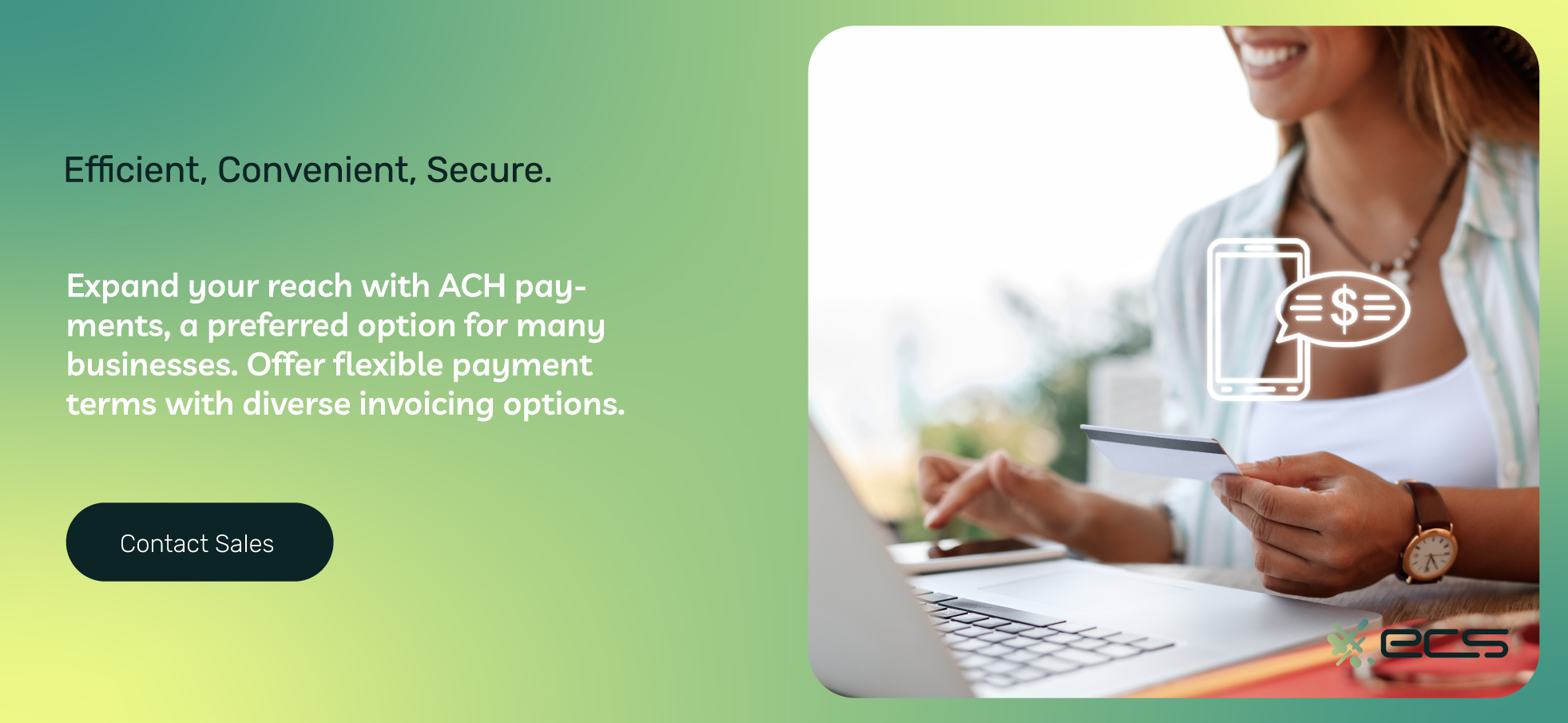
Wholesaling is a Vital Part of the Supply Chain
Wholesaling is necessary in part because many goods cannot make their way into the hands of consumers directly from the manufacturer. Take french fries as an example. A farmer in Idaho cannot peel, slice, and fry his crop for the pleasure of all those who dine beneath the golden arches (we’re talking about McDonald’s here).
They have to sell their crop to a wholesaler, who sells it to Ronald himself. In recent years, Ronald has indeed started purchasing some of his potatoes from independent family farms, perhaps caving to consumer pressure. However, he still uses purveyors like RDO, an agricultural wholesaler doing $2.5 billion in potatoes every year.
The potatoes are turned into fries, frozen, and then shipped to your local McDonald’s. There, they are blessed with the holy bubbling oil of the deep fryer and resurrected—at least until they enter the netherworld once again through the portal of your hungry mouth.
The point is that it’s not functionally possible for most manufacturers (or farmers) to get their products (or the finished product created by their raw materials) to consumers. Wholesalers are the middlemen who facilitate this process. Once upon a time, economies were truly “farm to table.” But wholesaling is a necessary ingredient in the complex economic landscape of 300 million people (in the U.S. alone).
Bulk Pricing and Economies of Scale
Wholesaling hinges upon the mystery of bulk pricing. Does that ultimately have any impact on what payment methods a wholesaler takes? Yes, it does. So, let’s start with manufacturing. When a manufacturer gets a bulk order, they can do more with less. Less labor per unit, less time, less waste, and fewer raw materials.
Savings are generated, which can be passed on to the buyer. That buyer will be the wholesaler (unless the manufacturer is also a wholesaler, which is common in some industries, such as the car industry). The wholesaler will distribute these items in bulk, lowering distribution costs. These savings can be passed on to their customer, the consumer-facing retailer.
The retailer has tons of markup that they need to add on to the consumer-facing price. This markup reflects their overhead: rent, labor, and marketing, to name a few pieces. The differences in these costs for retailers versus wholesalers are very nuanced.
Wholesalers and Retailers Have Different Costs
For instance, wholesalers are fine in a warehouse on the outskirts of town. In fact, that’s much better: closer access to ports, airports, railyards, and the freeway. This simply won’t do for consumer-facing retailers. They need a space with strong foot traffic and curb appeal, like downtown, a mall, or the local waterfront. This type of space is going to cost a lot more.
Now, let’s look at marketing costs. Wholesalers are B2B focused. They can attend trade shows and network. They can pick up the phone and call local business owners. If they win a contract with a large company, that’s a sizable guaranteed chunk of business.
Not so with retailers. They must pursue thousands, millions, or even billions of independent customers. This is an expensive proposition, especially in an era when the average consumer is bombarded by over 10,000 advertisements per day. Customers expect to be wooed through a multichannel approach on their seven different social media platforms.
It’s All About the Margins
The result of all this markup in retail is the potential for higher profit margins. Inflating these profit margins is one thing that retailers can leverage over wholesalers: brand recognition. Nike can charge $200 for a pair of sneakers because of the swoosh, and Lacoste can get away with charging the same for a polo tee because it has a small alligator on it.
Wholesalers do not have a brand “image” that they can sell. They are just there to do business, not create an aesthetic like Abercrombie & Fitch or The Cheesecake Factory (to cite two more examples). Ultimately, retailers stand to make better profit margins, coming in at 20-50%. Meanwhile, wholesalers are generally making profit margins of 15-30%.
As you can see from those numbers, some wholesalers will have better profit margins than some retailers. And in some industries, wholesalers do very, very well. But by and large, retailers have better opportunities for higher profit margins.
What does this all have to do with credit card transactions? A lot. Accepting credit and debit card payments comes with interchange fees and credit card processing fees from the issuing bank and card networks. These fees can eat away at profit margins. If profit margins are already high, this would be less of a concern. But if profit margins are thinner, a few decimals can make a big difference.
Flat Rate Pricing: A Bad Wholesale Payment Solution
Let’s look at a solution many retailers use, especially startup or boutique retailers. Incidentally, these types of consumer-facing businesses can enjoy higher markups because they sell unique experiences. Many use payment processors like Stripe, Square, or Shopify.
These payment processors tend to have simplified transaction fee structures. There may be some slight changes with an increase in sales volume. However, every card is treated pretty much the same way—there is no difference between a Visa debit card and an American Express Platinum Business Card.
In truth, flat rate pricing does not reflect what actually happens beyond the payment gateway or point of sale (POS) terminal. Payment pricing is extremely nuanced. Is it a credit card or a debit card? Is it a Visa, Mastercard, Amex, or Discover? Does it offer points or rewards? Is it a business card? What is the merchant category code of the business accepting payment?
None of this is captured in, say, flat rate pricing of 3% on every payment. However, that does not matter much to a business with high profit margins. Small businesses do not have much in the way of resources to run detailed audits on their operating expenses. Whatever seems easiest is best for the time being.
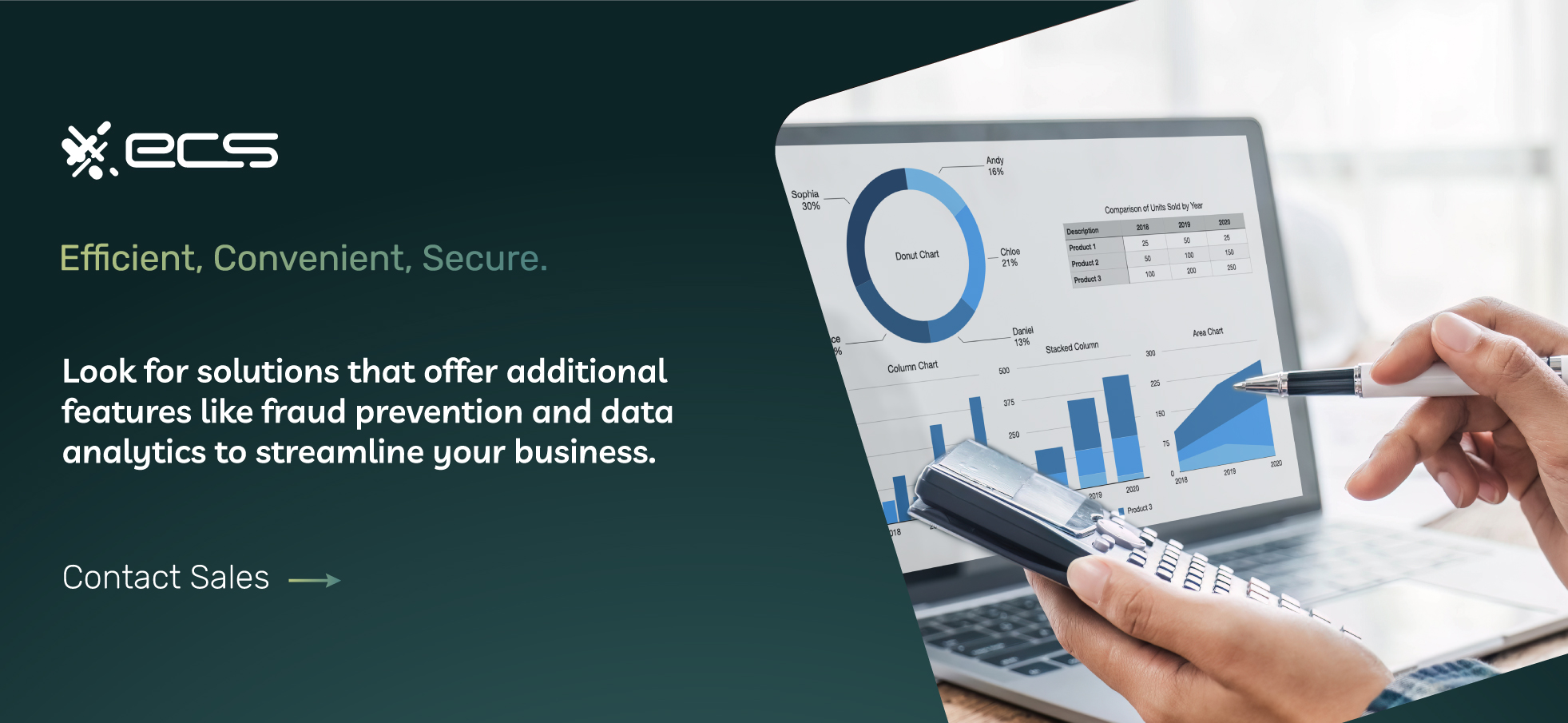
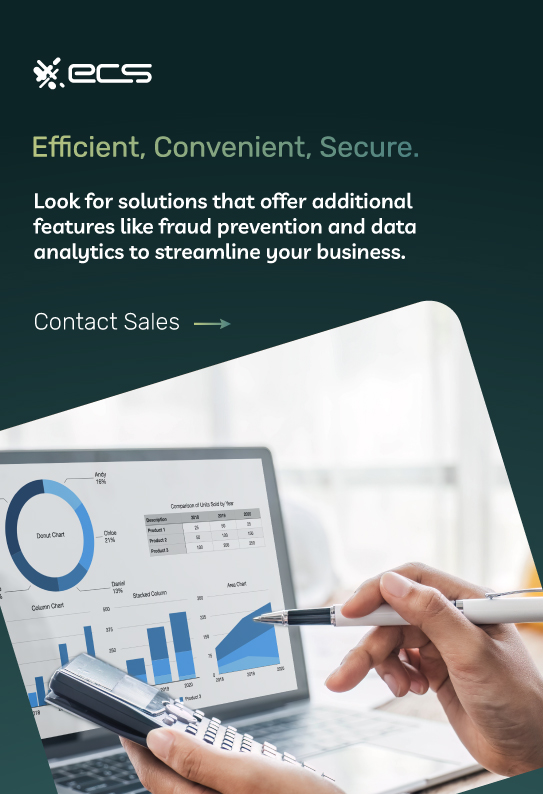
Examples of The Impact of Processing Fees On Margin
Let’s go back to the French fries. Suppose you have just opened a boutique avant-garde restaurant in Soho selling a unique culinary spin on poutine (a Canadian variety of French fries smothered in gravy and cheese curds). You charge $300 per plate and serve a client base of lunchtime business people and foodie tourists.
The actual cost of preparing said potatoes, gravy, and cheese curds is closer to $50 (not including real estate-based overhead, but including labor). What do you care if Stripe or Square takes 3% of that away from you?
Your profit margin is already at 500%. Our example is quite exaggerated, so don’t quit your day job just yet, Poutine enthusiasts. Remember, there will eventually be rent, taxes, and other expenses that eat away the profits. Until then, giving up $9 to the credit card processor is not a big deal.
Now, let’s examine how the same credit card processing company’s pricing would impact a wholesaler. Let’s suppose the wholesaler sells 2,000 bags of potatoes for $1,500. Let’s also suppose they are acquiring said potatoes for $1,200, creating a profit margin of 25%.
Paying 3% now looks a whole lot different. For starters, 3% of a $1,500 transaction is a substantial $45. But even worse is the impact on the profit margin, bringing it down to 22%. With narrower profit margins, wholesale credit card processing needs to be different. Flat rate pricing will (more often than not) be disadvantageous.
Wholesalers Need Responsive Customer Care
Another concern for the wholesale payment gateway is customer service. Many of the payment processors used by retailers have notoriously bad customer service and annoyingly bland hold music. You may be wondering why this matters.
Before we get there, let’s mention that many of these payment processors are actually payment aggregators. This means they bundle all their customer merchants under their own merchant ID. They cannot afford to let any of the merchants tarnish their reputation. So, if any merchants start causing problems, they can have their merchant services turned off.
Then, the business owner tries to get on the phone with Square or Stripe. They don’t have an account manager dedicated to the relationship, so they must wait on hold. Meanwhile, customers are lining up. While this situation is not ideal, the business owner can tell everyone that it’s a cash-only day, at least until this problem gets figured out.
This workaround won’t work for wholesalers. Unless you like to collect payments in person for some reason (perhaps to sample some fantastic Soho Poutine), all of your ongoing transactions are remote and ideally automated. What happens if your payment processing services are down and payments start bouncing?
You’ll have to run around and recoup your payments, all while trying to iron out why you were tossed from the payment wagon. Fraudulent purchase? Too many chargebacks? Posted the wrong things on Facebook again? That last example is a bit futuristic, we’ll admit.
In any case, wholesale payment solutions demand personalized customer care. You need to be able to reach an account manager if something goes wrong, so that you can get your payment processing back online ASAP.
Flexible Payment Terms With Invoicing
Another feature that wholesalers need is flexible invoicing. Retail payment processing is largely made up of terminals and online payment gateways. Invoicing is less common, although common in certain industries like healthcare.
Flexible payment plans are also less common, even though they are making some serious inroads both online and in the brick-and-mortar space with BNPL (buy now, pay later). However, both invoicing and flexibility are indispensable in the world of wholesale.
Wholesale merchants are selling to retailers. Retailers, especially smaller ones, may not yet have the cash to settle their bills. They need to sell the goods in question first. That’s why many wholesalers and suppliers give their customers Net-30 terms of payment.
There are more nuanced payment structures like 2-10/Net 30 (a 2% discount if the invoice is settled within ten days). Other payment terms include Net 15, 20, 60, and even 90. If you have dozens or hundreds of customers, you cannot juggle the payment schedules on a paper calendar. This is all the more so if different customers are getting different terms.
A payment processor who works with wholesale customers is poised to deliver comprehensive invoicing software. This software will grant you the degree of flexibility you want to offer your customers. It can also integrate with accounting suites and inventory software, reducing the manual workload needed to move data between systems.
ACH Payments
In our earlier example, we cited a 3% payment taking $45 away from a $1,500 sale. For the Soho eatery selling overpriced poutine, credit cards are really the only way to get paid. Checks are out, cash is out, and so are ACH payments.
ACH payments involve moving money directly (sort of) from the customer’s bank account to yours using the ACH network. The payment information that’s used are account and routing numbers. This payment method won’t work in a restaurant, as it would be extremely cumbersome to request. Here is your moist toilette, sir, and after you’ve cleansed those fingers of cheese curds, may I humbly request your account and routing number?
ACH payments do work, however, for recurring billing or large, one-off purchases that can be made from an office. ACH payments have an edge over card payments because the cost of an ACH transaction is usually much lower. The average ACH transaction costs just three dimes. Compare this to $45 (or whatever 3% would be).
Wholesale sales are big sales. If you can avoid paying 3% on these sales and instead just pay a fixed amount (that may even be less than $1), you will significantly increase your profit margins. Wholesale payment processing solutions should allow for ACH payments.
Something related to keep in mind: some of your customers will want to use their business credit cards to rack up points. Business credit cards have significantly advantageous rewards. They also come with higher fees for you. Speak with your payment processor about the pros and cons of steering your customers towards ACH payments or letting them “swipe” that Amex Hilton Honors card.
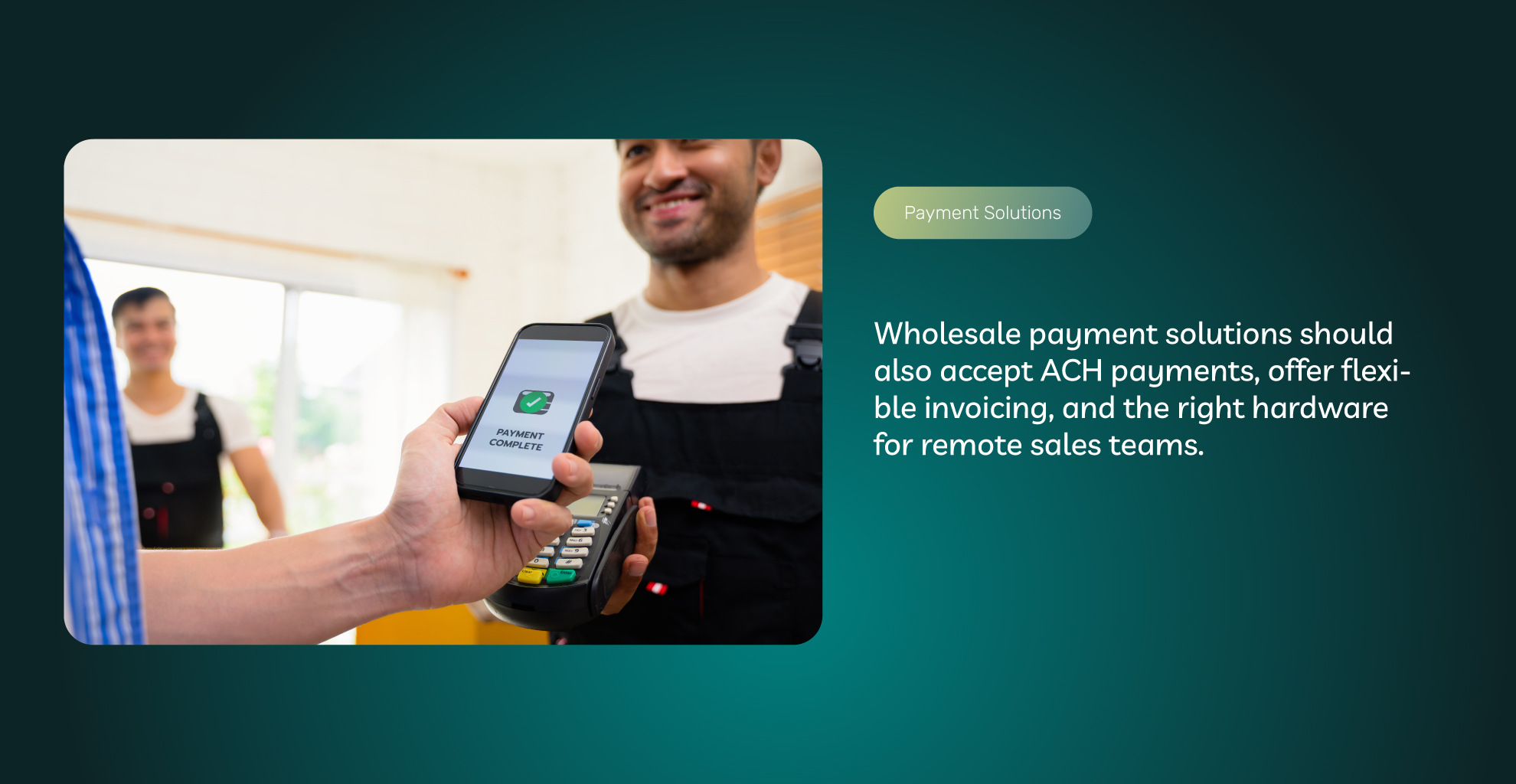
Mobile Wholesale Credit Card Terminals?
Some wholesale merchants have sales teams. These sales teams could include cold-calling lead generators, sales reps, and field sales reps. The field sales reps may go into businesses and try to turn them into customers.
Field sales reps would benefit from mobile payment solutions. This can allow a smooth transition from the sales conversation (assuming it went well) to closing a deal immediately. The ability to take payments on the go is an extra functionality that a payment processor can offer. This can be done with a cloud-based application that reps can access remotely.
If your company has a sales team, speak to your payment processor about solutions to facilitate more sales and deal closures “in the field” or “on the hunt.”
Wholesale Payment Processing Wrap-Up
The lower margins of wholesale selling mean that processing fees are a more serious consideration. Wholesalers also need responsive customer service because if the payment gateway goes offline, they’ll have no way of maintaining payment continuity (unlike retailers who immediately face consumers and can take cash).
Wholesale payment solutions should also accept ACH payments, offer flexible invoicing, and the right hardware for remote sales teams. To learn more about what aspects of payment processing are uniquely helpful to wholesalers, contact us by filling out the form below or giving us a call.
Frequently Asked Questions About Processing Wholesale Payments
Unlike retail, wholesale payment processing caters to businesses involved in bulk selling and distribution, which involves different cost structures and clientele. As a result, wholesale transactions often have smaller profit margins, making considerations to process with a customizable fee structure from processors like ECS payments crucial to maintain profitability.
Because wholesalers operate on narrower profit margins than retailers, credit card processing fees can significantly impact these margins. Wholesalers should choose payment solutions that minimize fees. ECS offers a variety of low-cost payment solutions and flexible fee structures for our wholesale merchants.
Cost-effective payment solutions may include options like ACH and debit card payments to enhance profitability. The lower transaction costs of ACH and debit payments compared to credit cards can significantly improve profit margins for wholesalers. ECS Payments offers these cost-effective solutions and more. Contact us today to see how you can take advantage.
Wholesalers handle transactions with larger volumes and distinct dynamics. Because of this, flat-rate pricing often overlooks these characteristics, posing a financial challenge. Flat-rate models may not consider card variations, rewards, or business-specific needs, resulting in wholesalers paying higher processing fees. Given their thinner profit margins, wholesalers need payment solutions that factor in bulk pricing and diverse customer bases to optimize profitability. ECS Payments understands. We are ready to discuss your options today.
